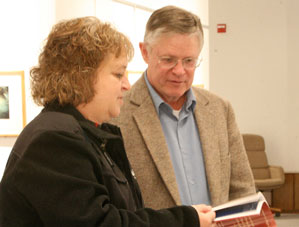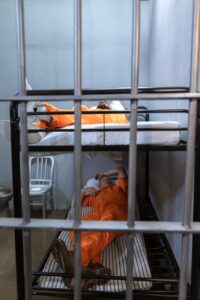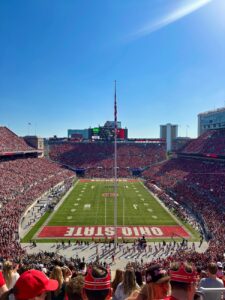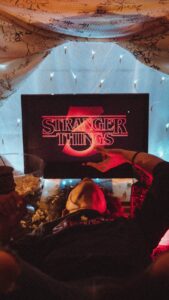USU art professor discusses Barrier-Canyon rock art
Taking photographs of Barrier Canyon Rock Art for the past 16 years has been the passion of Utah State University art professor Craig Law. “The purpose of the photos are to foster respect, understanding and develop an appreciation of human history.”
Law started working for the BCS Project in which many of the Barrier Canyon-style rock art images are documented for preservation. About 140 sites were originally on the list to be documented by the BLM and National Park Service, but according to Law, we have found over 300 and know there are even more.

Taking photographs of Barrier Canyon Rock Art for the past 16 years has been the passion of Utah State University art professor Craig Law. “The purpose of the photos are to foster respect, understanding and develop an appreciation of human history.”
Law started working for the BCS Project in which many of the Barrier Canyon-style rock art images are documented for preservation. About 140 sites were originally on the list to be documented by the BLM and National Park Service, but according to Law, we have found over 300 and know there are even more.
Barrier Canyon Style-rock art are images appearing mostly in Utah, with the largest concentration of sites in and around the San Rafael Swell and Canyonlands National Park, but the full range extends into much of the state and Western Colorado.
Barrier Canyon Style-rock art panels are mostly pictographs (painted) but there are also several petroglyphs (pecked) in the style. These panels are believed to have been created during the archaic period (probably late archaic) and are estimated (from direct and indirect carbon 14 dates) to be somewhere in the range of 1500 to 4000 years old, possibly older. They usually portray humans who are hunting,
Photographing the traditional film-method are taken with large-format cameras for detail and last 60 to 70 years at best whereas photos from digital cameras printed with some of the new ink being tested can last at least a century.
Law said the CEU exhibit was the third traveling rock-art exhibit funded in the state by the Utah Arts Council. The George Eccles Foundation provided the project with $2,000-$3,000 to help buy cameras and equipment to help keep it a float.
“I cannot stress enough that these sites are something we have to cherish, watch over, take care of so we will always have the rich, beautiful rock art work to witness,” he said. “They tell us human history.”
“I am doing all I can to record this history. I really feel good using all the tools I have to encourage the understanding, appreciation and significance of this work.” Professional archeologists in the field are also using his work in their rock-art research.
In the future, Law said that full sets of his work for the BCS will be stored in high resolution CDS, probably in Salt Lake City. He hopes to also have it available online soon.




